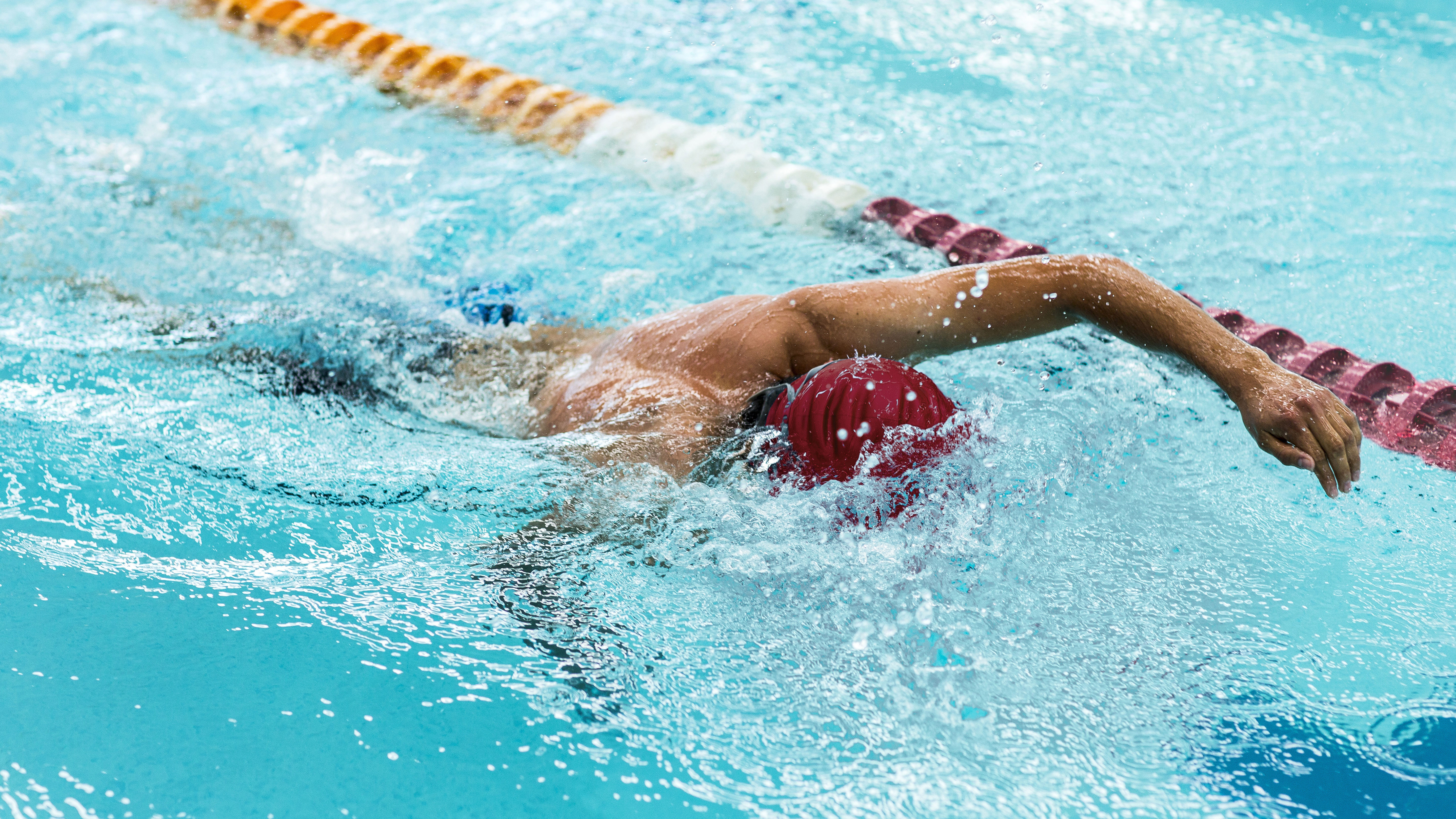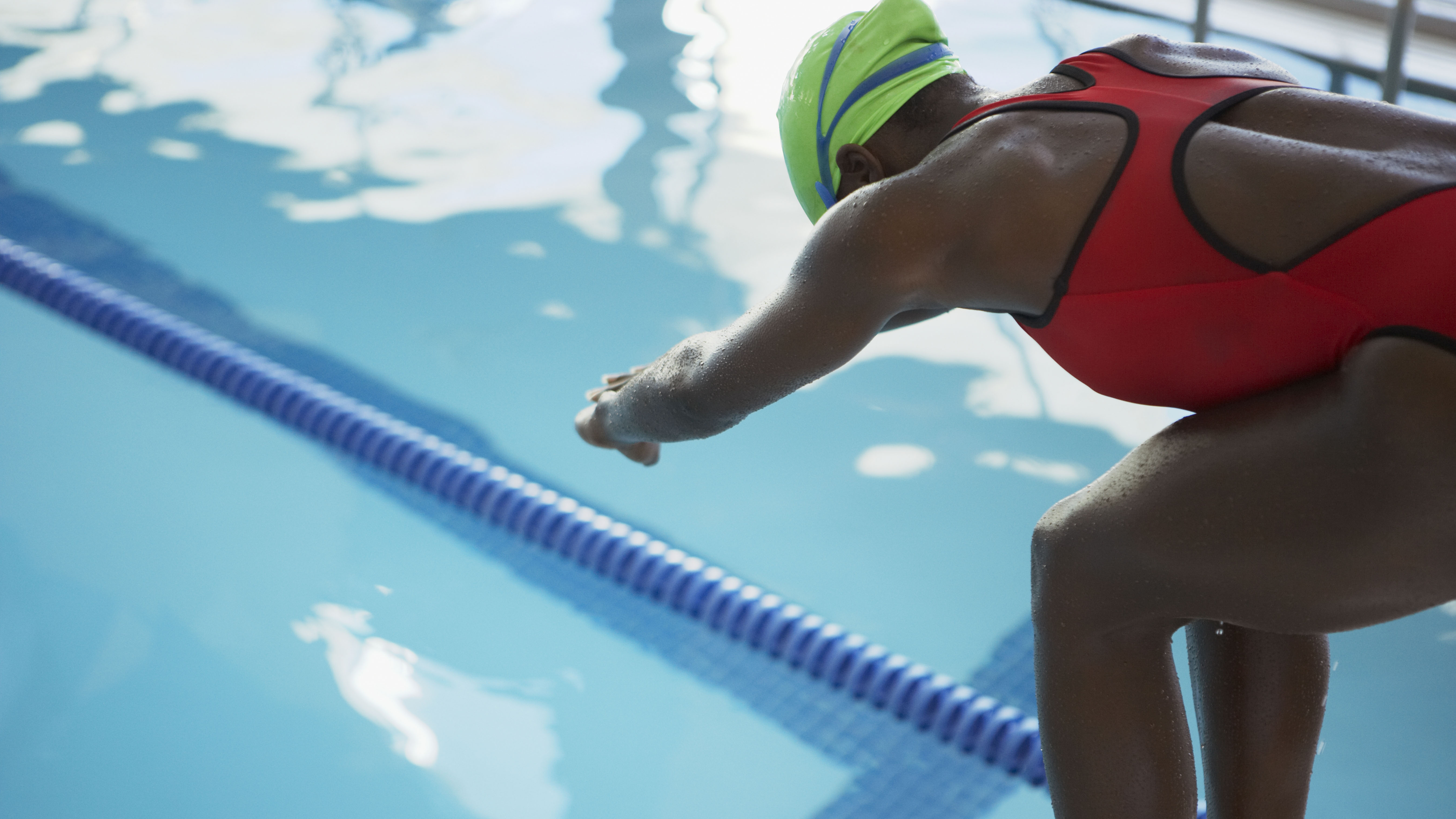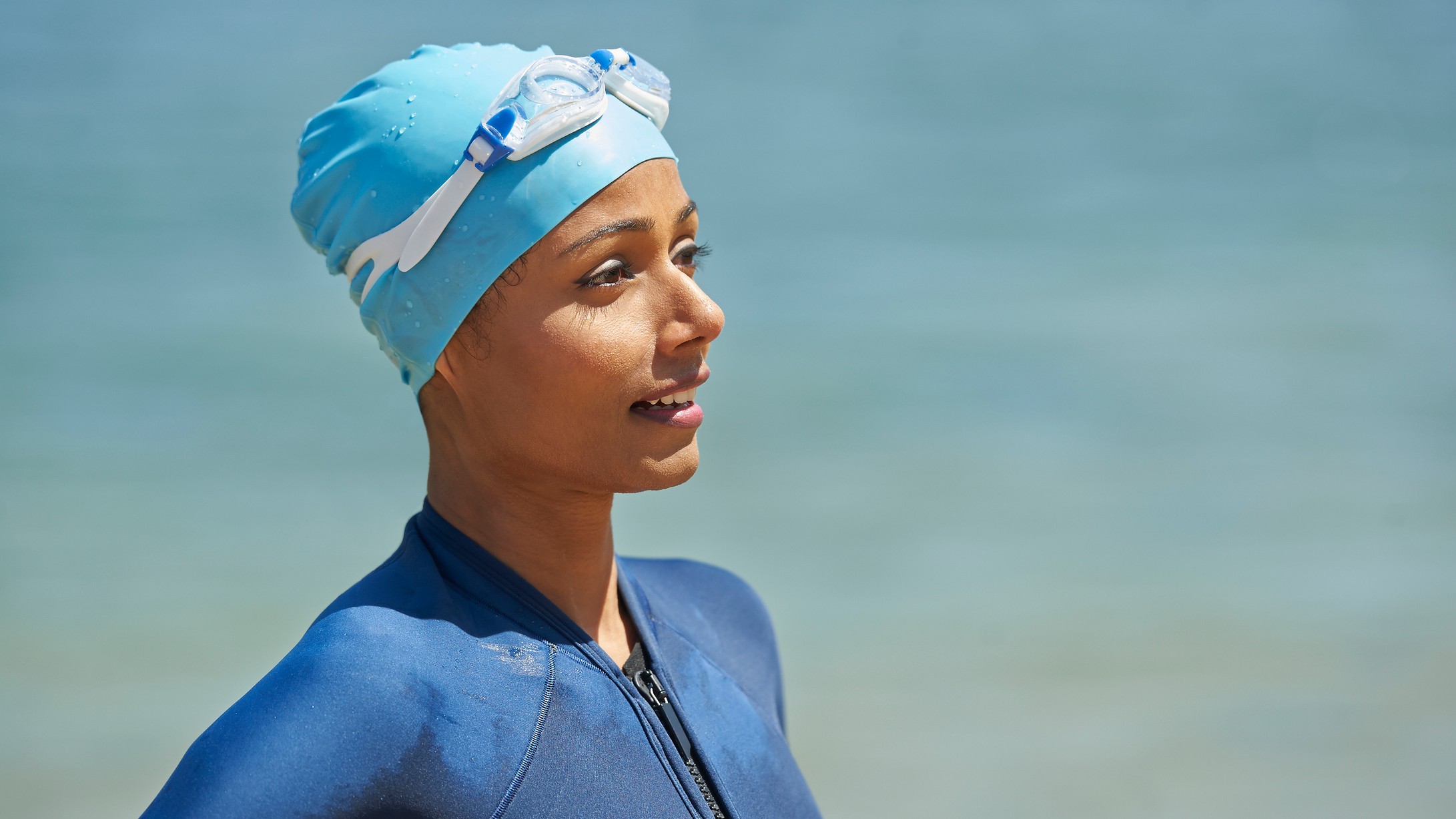Is swimming cardio?
We all know it’s a great way to stay in shape, but is swimming cardio?

The lean physiques of elite swimmers are testament to the fact that hitting the pool can be a great workout, but is swimming cardio?
Most people know a lengthy cycle or endurance session on one of the best treadmills qualifies as cardiovascular exercise, but there are few who could give you a concise definition of the term. Consequently, many are unaware of the other options out there when looking to lose weight or train their circulatory system – boosting their athletic performance as a result.
We examined the existing literature and spoke to Lindsy Kass, principal lecturer in sport, health and exercise at the University of Hertfordshire, to establish what cardio is, and whether donning your goggles will bring about the same benefits as a long run, row, bike ride or bout on one of the best exercise machines to lose weight.

Lindsy Kass is Principal Lecturer on the BSc (Hons) Sport and Exercise Degree Programme at the University of Hertfordshire. She is a Registered Nutritionist and an Accredited Exercise Physiologist with the British Association of Sport and Exercise Science. Kass has worked at the University of Hertfordshire for over 15 years and is a Fellow of the Teaching and Learning Academy. Her work includes research into carbohydrate and protein sport drinks, looking at the effect of magnesium supplementation on blood pressure and exercise and, most recently, she was the lead investigator on a large study looking at the effect of the Covid lockdown on exercise and eating habits.
What is cardio?
Cardio is a word so commonplace nowadays that its meaning seems to have been lost along the way. Synonymous with unenjoyable, sweaty sessions, the word strikes fear into prospective exercisers the world over — but it doesn’t have to be this way. You see, cardio training goes far beyond the confines of a grueling long distance run, with a whole host of enjoyable activities also out there for you to choose from.

“Cardio exercise (or cardiovascular exercise) is exercise that uses the heart and the vasculature (vessels) that carry the blood,” explains Kass. “This means activities that cause a sustained increase in heart rate and breathing rate, due to an increase in the circulation of blood and oxygen throughout the body to the working muscles. The more difficult the activity and the harder you work, the harder your cardio exercise becomes.”
So, by this definition, anything from burpees to bear crawls to a brisk walk can be categorized as cardio, so long as it elevates your heart rate. If you want to see which exercises have this effect, you could grab one of the best budget fitness trackers to keep an eye on your pulse.
Is swimming cardio?
The short answer is yes. As an exercise that works your heart and lungs, swimming ticks every box when it comes to being categorized as cardio.
“With swimming, the exertion of pulling yourself through the water means you need more oxygen to the working muscles, and your cardiovascular system will need to work harder to supply this,” explains Kass.
Is swimming aerobic or anaerobic exercise?
There are several key differences when considering aerobic vs anaerobic exercise.
Aerobic exercise is activity performed in the presence of oxygen. It involves repeatedly moving large muscle groups in a rhythmic, continuous motion, according to the American College of Sports Medicine (ACSM).

Anaerobic exercise, on the other hand, is defined by the ACSM as intense physical activity over a short time period. Crucially, it is “fueled by the energy sources within the contracting muscles and independent of the use of inhaled oxygen as an energy source”.
As an ever-versatile form of exercise, swimming can be both aerobic and anaerobic, depending on the nature of your session.
“The influencers are the length of the activity and how hard someone is working,” says Kass. “Generally, anaerobic exercise can last up to two minutes; anything over that is considered aerobic. However, if you were to do two minutes at a very slow easy pace, that would still be aerobic. It is determined by the energy pathway used.”
Both aerobic and anaerobic exercise count as cardio, as both forms of exercise cause your heart rate and breath rate to increase.
Is swimming good exercise?
Beyond being a good form of exercise, Dr Kass describes swimming as an “excellent” activity for maintaining health and fitness.
“It works the whole body and it burns calories and fat,” she says. “It also works the joints without any pressure around them, as the body is supported.

“It’s excellent for those recovering from injury or joint replacement (although some strokes may be restricted with specific joint replacements) and also for those that are pregnant.”
A 2015 study published in the Journal of Exercise Rehabilitation reinforces this viewpoint. Among a group of 24 middle-aged women, half swam for 60 minutes three times a week for 12 weeks. When compared to the results of a control group that did not swim regularly during the study period, it was found that: “regular swimming exercise is effective for improving the physical composition, physical strength, and blood lipids of middle-aged women”.
Or, in simple terms, the swimmers’ body fat percentage decreased over the 12 weeks while their strength increased.
Does swimming build muscle?
Many people turn to swimming to build their bodies, having seen the impressive physiques of professional athletes. We’ve already discovered that the activity recruits the body’s major muscle groups, but does swimming build muscle?
“It does build muscle, but you can’t get any bulk on the muscle,” Kass explains. “This is due to the muscles working in a double concentric fashion as the limbs are supported by the water.
“You need an eccentric phase (where the working muscle is lengthening, like the downward phase of a bicep curl) in the muscle to get bulk, which is very hard to get in the water. However, you still get a good shape on the muscle and it makes them ‘fitter’. But if you want big, bulging muscles you need to go to the gym.”
So, while hitting the pool is an excellent form of exercise, particularly for improving the efficiency of your cardiovascular system, strength exercise is the best way to go if you want to build muscle.
Sign up for the Live Science daily newsletter now
Get the world’s most fascinating discoveries delivered straight to your inbox.

Harry Bullmore is a fitness writer covering everything from reviews to features for LiveScience, T3, TechRadar, Fit&Well and more. So, whether you’re looking for a new fitness tracker or wondering how to shave seconds off your 5K PB, chances are he’s written something to help you improve your training.
When not writing, he’s most likely to be found experimenting with a wide variety of training methods in his home gym or trying to exhaust his ever-energetic puppy.
Prior to joining Future, Harry wrote health and fitness product reviews for publications including Men’s Health, Women’s Health and Runner’s World. Before this, he spent three years as a news reporter with work in more than 70 national and regional newspapers.










